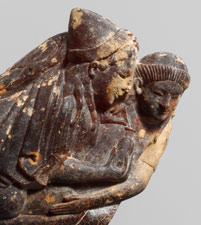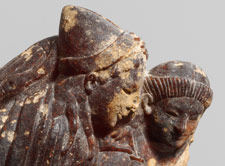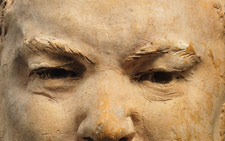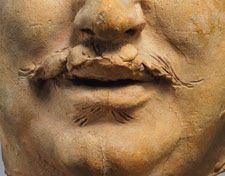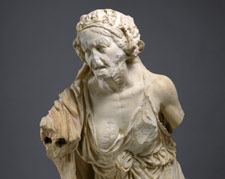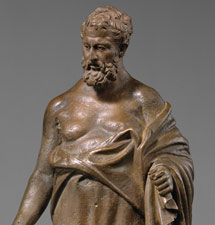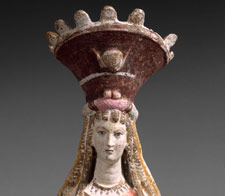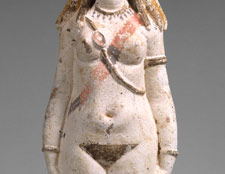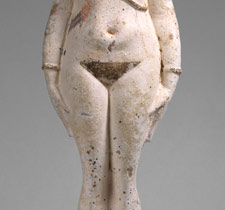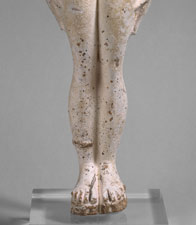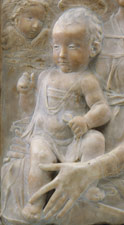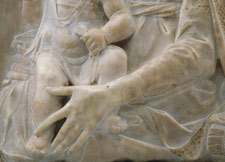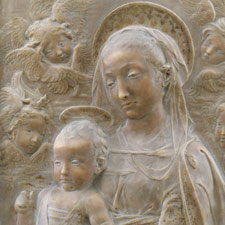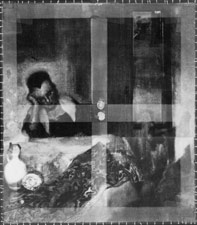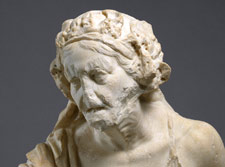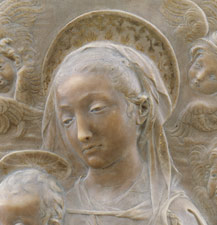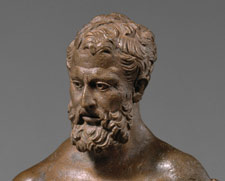New Connections appear every Wednesday. Sign up for a reminder.
Paintings conservator George Bisacca contemplates the little details that create a feeling of familiarity in a work of art.
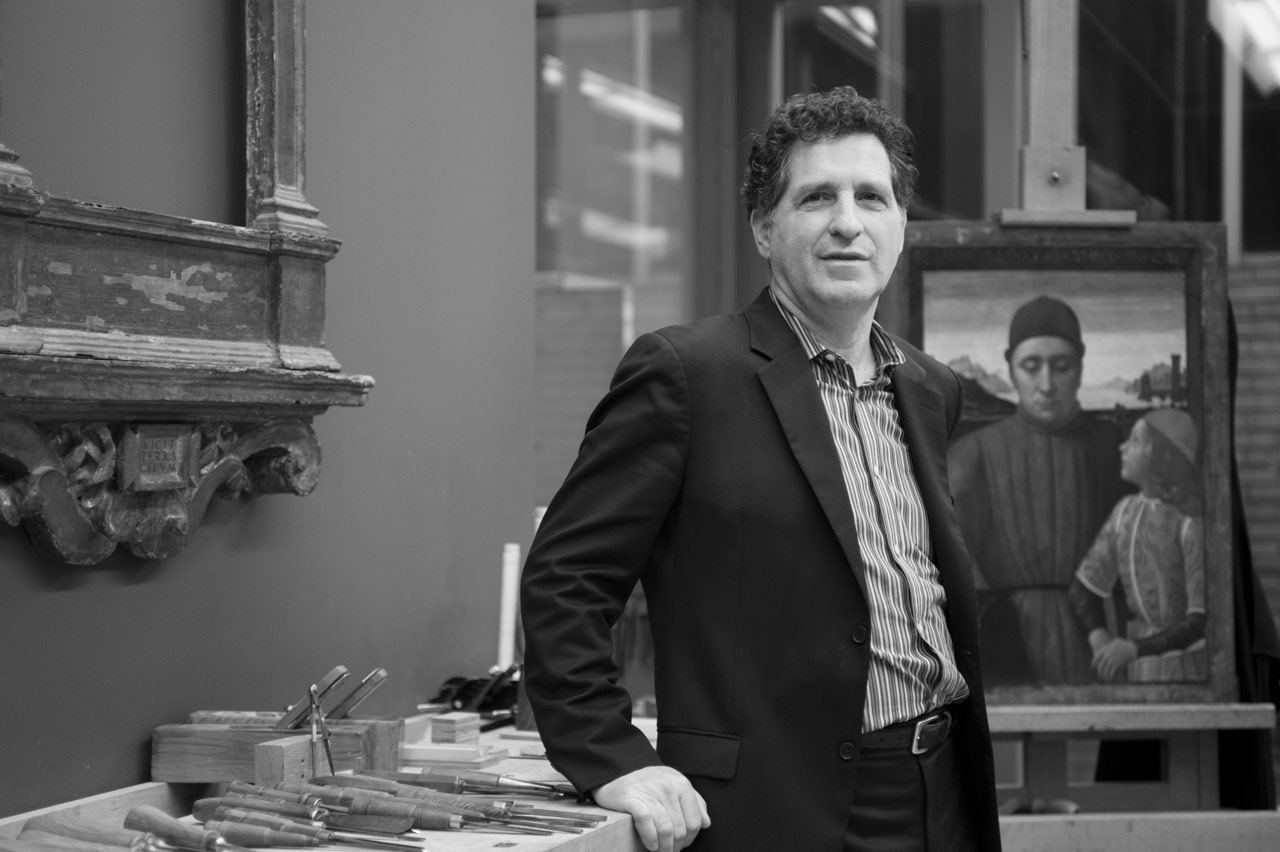 1280852
1280852 1280906
1280906 9151024
9151024 1280945
1280945 6181024
6181024 9071024
9071024 1280803
1280803 12801002
12801002 9071024
9071024 8141024
8141024 12801016
12801016 9791024
9791024 5551024
5551024 4461024
4461024 11731024
11731024 1280993
1280993 10981024
10981024 8941024
8941024 4461024
4461024 8181024
8181024 5651024
5651024 1280921
1280921 10241024
10241024 8851024
8851024 8981024
8981024 8851024
8851024 1075796
1075796 9871024
9871024 1129909
1129909 1280852
1280852
My name is George Bisacca and I'm a conservator in the paintings conservation department and my topic is "Intimacy."
As a conservator you think very much about the artist making the object, and you understand that the artist has observed, and then
captured in the material, some aspect that is intimate, and by that I mean it connects all of us
personally to the artwork. It brings it onto our human scale.
There certainly is this almost shocking realization that this block of stone is so like a human body that it becomes very intimate. The fabric seems to be transparent over her flesh, and the cock of the hip on the right side, you can understand the whole bone structure, and it's just so incredibly real.
Terracotta is a much more intimate form, it contains all of the evidence of the sculptor's working, the way that he's just casually taken
a wire tool and pressed in for the eyebrows and the mustache and the
hairs under his lip. And also you can see those little bits of clay that he's rolled between two fingers and stuck on.
Every nuance of musculature is described there and it almost lives, this thing.
Normally when we think of classical sculpture, we think of these heroic poses and gestures, and here instead, they've captured just an old woman, so that you see the
sagging skin on her neck, with her mouth open. You can see the kind of effort that it costs her to do very simple things in her life. It immortalizes, in a way, the human condition.
This philosopher—the intensity of the face. He's occupied with his mind. But there's this wonderful kind of nonchalance about the way that he has his garment draped over himself
exposing his belly from a little too much eating and drinking. He looks like a lot of older people you might see at the beach.
There's something so endearing about this little statue of Isis. Even though she's supposed to be a goddess
she has this enormous headdress on—she doesn't really quite seem up to the job.
Her arms are so tight at her sides and she keeps
her legs so carefully together, she seems a little
embarrassed about her nakedness. Being the goddess of fertility
of course, she has those big hips that I think she's a little nervous about. And I just find it such a beautiful rendering of an insecure woman.
Aspects of this Madonna and Child transform it into any mother and any real child. This nervous energy that the child has, he's
digging in his heel, pushing backward against his mother's chest. She reaches her hand over
and holds both of his legs so he doesn't just squirm right off of her lap.
She's aware of her son's future suffering and death, and that's all contained in her face, this sadness, I find incredibly intimate.
I feel voyeuristic intruding on a very private moment, looking at this young girl falling asleep on her hand in the late afternoon light. Something has clearly just taken place. That chair on the right is turned the wrong way around from the table; there's a glass tipped over; the door is open. Certainly a man has been there. When we x-rayed
this picture, we discovered that in that open doorway, there's a man walking towards the room. Vermeer has edited that out. I think he realizes that that would have been jarring in the scene
which is otherwise so solitary and so quiet.
These works point to simple human qualities
that all people share—that everyone, no matter how
they're immortalized in a great work of art, they were
still a simple person, just like anyone else.
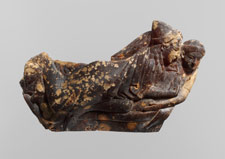 |
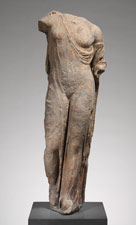 |
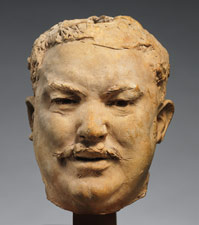 |
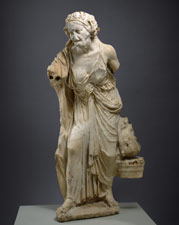 |
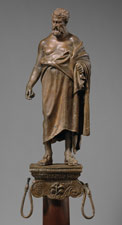 |
 |
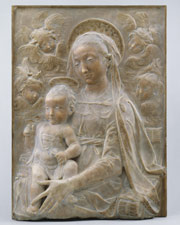 |
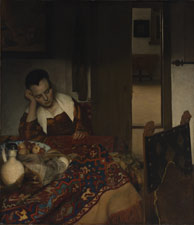 |
Works of art in order of appearanceLast Updated: June 22, 2015. Not all works of art in the Museum's collection may be on view on a particular day. For the most accurate location information, please check this page on the day of your visit. |
||
 |
Carved amber bow of a fibula (safety pin) ca. 500 b.c.; Archaic or Classical Etruscan Amber Gift of J. Pierpont Morgan, 1917 (17.190.2067) More information: The Collection Online Not on view
|
 Greek and Roman ArtFirst Floor and Mezzanine
Greek and Roman ArtFirst Floor and Mezzanine |
 |
Marble statue of Aphrodite, the so-called Venus Genetrix 1st–2nd century a.d.; Imperial copy of Classical original Adaptation of work attributed to Kallimachos Roman copy of Greek original Marble Purchase, 1932 (32.11.3) More information: The Collection Online Not on view
|
 Greek and Roman ArtFirst Floor and Mezzanine
Greek and Roman ArtFirst Floor and Mezzanine |
 |
Head of Balzac 1891 Auguste Rodin (French) Terracotta Rogers Fund, 1912 (12.11.1) More information: The Collection Online Not on view
|
 European Sculpture and Decorative ArtsFirst Floor
European Sculpture and Decorative ArtsFirst Floor |
 |
Statue of an old market woman 1st century a.d.; Early Imperial, Julio-Claudian Roman Marble Rogers Fund, 1909 (09.39) More information: The Collection Online Not on view
|
 Greek and Roman ArtFirst Floor and Mezzanine
Greek and Roman ArtFirst Floor and Mezzanine |
 |
Statuette of a philosopher on a lamp stand late 1st century b.c.; Early Imperial, Augustan Roman Bronze Rogers Fund, 1910 (10.231.1) More information: The Collection Online Not on view
|
 Greek and Roman ArtFirst Floor and Mezzanine
Greek and Roman ArtFirst Floor and Mezzanine |
 |
Terracotta Figure of Isis-Aphrodite Roman period, 2nd–3rd century Egyptian Alluvial clay; brown, black, red, and pink paint on white englobe Purchase, Lila Acheson Wallace Gift, 1991 (1991.76) More information: The Collection Online Not on view
|
 Egyptian ArtFirst Floor
Egyptian ArtFirst Floor |
 |
Madonna and Child with Angels 15th century (ca. 1455–60) Antonio Rossellino (Italian) Made in Florence, Italy Marble, gilding on halo and dress Bequest of Benjamin Altman, 1913 (14.40.675) More information: The Collection Online Not on view
|
 European Sculpture and Decorative ArtsFirst Floor
European Sculpture and Decorative ArtsFirst Floor |
 |
A Maid Asleep ca. 1656–57 Johannes Vermeer (Dutch) Oil on canvas Bequest of Benjamin Altman, 1913 (14.40.611) More information: The Collection Online Not on view
|
 European PaintingsSecond Floor
European PaintingsSecond Floor |
© 2011 The Metropolitan Museum of Art |
||

